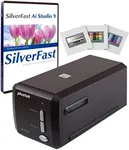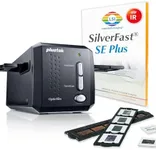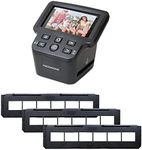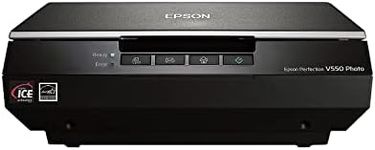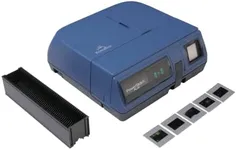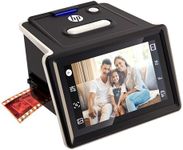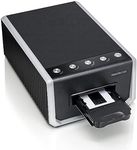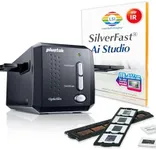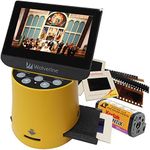Buying Guide for the Best Slide Scanners
Choosing the right slide scanner can make a big difference in how easily and effectively you can digitize your film slides or negatives. The best approach is to think about what you want to achieve: are you archiving family memories, creating digital art, or working on professional projects? Understanding your needs will help you focus on the features that matter most to you. It's also important to consider how much scanning you'll do, how much space you have, and how comfortable you are with technology. By learning about the key specifications, you can make a confident choice that fits your workflow and expectations.Resolution (DPI)Resolution, measured in DPI (dots per inch), tells you how much detail the scanner can capture from your slides. Higher DPI means more detail and larger digital files, which is important if you plan to print large photos or crop images. Scanners typically range from around 1800 DPI to over 7200 DPI. For basic sharing or small prints, 1800-2400 DPI is usually enough. For archiving or larger prints, 3200-4800 DPI is a good middle ground. If you want to preserve every detail or work professionally, look for 5000 DPI or higher. Think about how you'll use your scans to decide what level of detail you really need.
Color DepthColor depth, often shown as 24-bit, 48-bit, or higher, refers to how many colors the scanner can capture. More bits mean smoother color transitions and better ability to recover details from shadows and highlights. For most home users, 24-bit is sufficient, but if you want the best possible color accuracy or plan to edit your scans heavily, 48-bit or higher is better. Consider your interest in photo editing and how important color accuracy is for your projects.
Scan SpeedScan speed tells you how long it takes to scan each slide. Faster scanners save time, especially if you have a large collection. Some scanners can process a slide in seconds, while others may take a minute or more. If you only have a few slides, speed may not matter much, but for big projects, a faster scanner can make the process much less tedious. Think about the size of your collection and your patience level when considering scan speed.
Slide/Film CompatibilityNot all scanners can handle every type of film or slide. Some are designed for 35mm slides only, while others can scan medium format or even larger film types. Make sure the scanner you choose matches the size and type of slides or negatives you have. If you have a mix of formats, look for a model that supports multiple types. Your collection should guide your choice here.
Software and ConnectivityThe software that comes with a scanner affects how easy it is to use and what you can do with your scans. Some scanners offer simple, automatic scanning, while others provide advanced editing and correction tools. Connectivity options like USB, Wi-Fi, or memory card slots also affect how you transfer images to your computer or other devices. If you want a simple process, look for user-friendly software and straightforward connections. If you enjoy tweaking your images, advanced software features may be more important.
Physical Size and DesignSlide scanners come in different shapes and sizes, from compact units to larger, flatbed designs. If you have limited space or want something portable, a smaller scanner is ideal. Larger scanners may offer more features or handle more slide types at once. Consider where you'll use and store the scanner, and whether you need to move it around.
